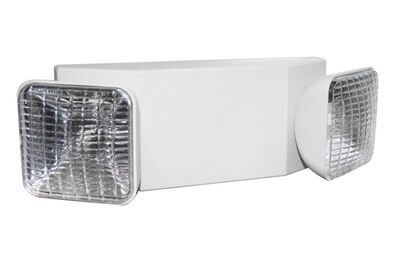INTERNATIONAL EMERGENCY LIGHTS
INTERNATIONAL EMERGENCY LIGHTS CAN COME IN A VARIETY OF VOLTAGE AND HERTZ CONFIGURATIONS.
Trying to install Emergency Lights in offshore facilities can be a challenge, just like installation of any other electrical equipment. The biggest problem is in knowing what you need, and then being able to find it. Fortunately, steel emergency lights are readily customizable for a number of configurations, including voltage changes. We have designed an International Emergency Light that allows you to select your voltage, hertz, and housing type. Click below to view the product!
VIEW OUR INTERNATIONAL EMERGENCY LIGHT
As you look at electrical systems around the world, there are two major voltage ranges used; the 110V/120V range like we use here in the United States and the 220V/230V range. In actuality, that means a number of smaller steps, because there are some countries which have their own voltage standard, such as 110 VAC or 240 VAC.
The other thing that affects the working of electrical equipment in these countries is the frequency standard used for the electrical system. Frequency is measured in Hertz, which stands for cycles per second. Here in the U.S. we use a 60 Hz system, but most of the world uses 50 Hz.
Since the circuitry for emergency lights is fairly simple, and doesn’t base “time” off of the electrical supply current, the frequency of the electrical lines isn’t an issue. However, the Emergency Lights drop the electrical line voltage down to the working voltage of the light unit, whether 6 VDC, 12 VDC or 24 VDC. Because of this, if an Emergency Light designed to work at 120 VAC was connected to 220 VAC, it would cause the battery to explode, the bulbs to burn out spectacularly and probably fry the circuit board.
The solution to this problem is to change out the transformer in the Emergency Light, with one that is designed to be drop 220 VAC down to the aforementioned operating levels, instead of using the standard transformer designed for a 120 VAC installation.
DEALING WITH VOLTAGE DROP
The other common electrical problem when installing equipment in Third-World and Developing countries is the unreliability of electrical service. It is not uncommon to have line level drops or blackouts on an almost daily basis, especially during high electricity consumption times.
Standard emergency lights used in the United States are designed to provide lighting for 90 minutes, sufficient time for people to leave the building under any circumstances. However, in these countries, the emergency lighting system may have to provide lighting for people to continue working, while they wait for regular electrical service to be restored.
In these cases, you need Emergency Lights which are both bright and will stay lit for a number of hours. Steel Emergency Lights configured for 24 volts, will provide brighter lighting than the typical 6 volt lighting. At the same time, these Steel Emergency Lights can be equipped with batteries which will allow them to stay illuminated for up to 10 hours, allowing people to work while they are waiting for power to return or even until the end of the work day.
We have an extensive line of fully customizable Heavy-Duty Steel Emergency Lights, which are great for handling International Emergency Lighting requirements and other special applications.

